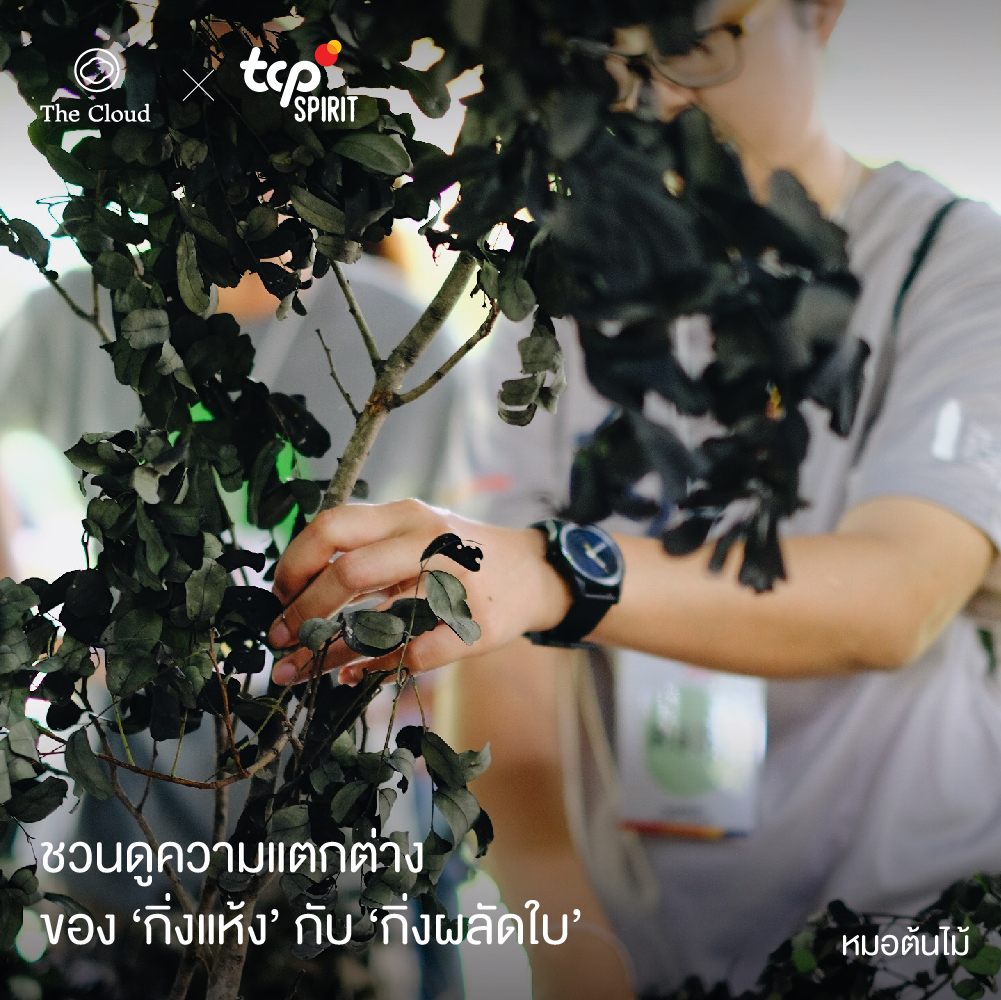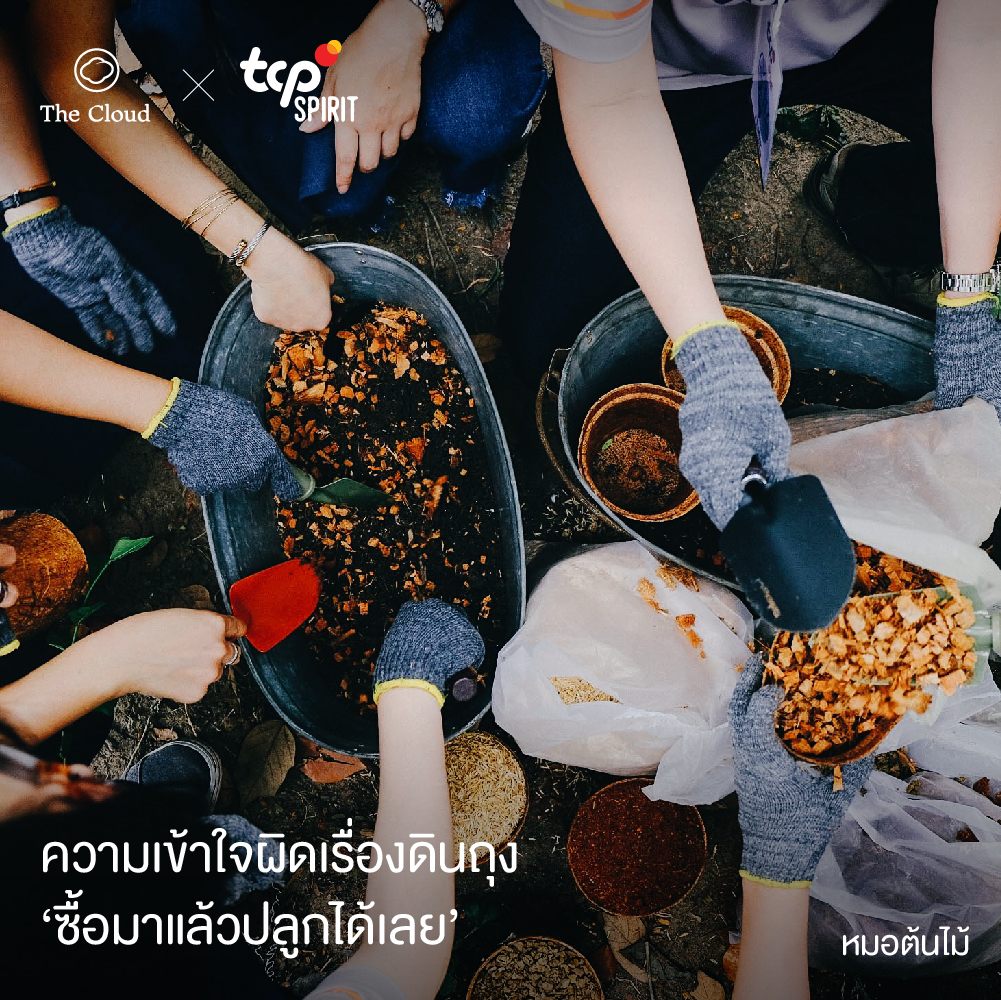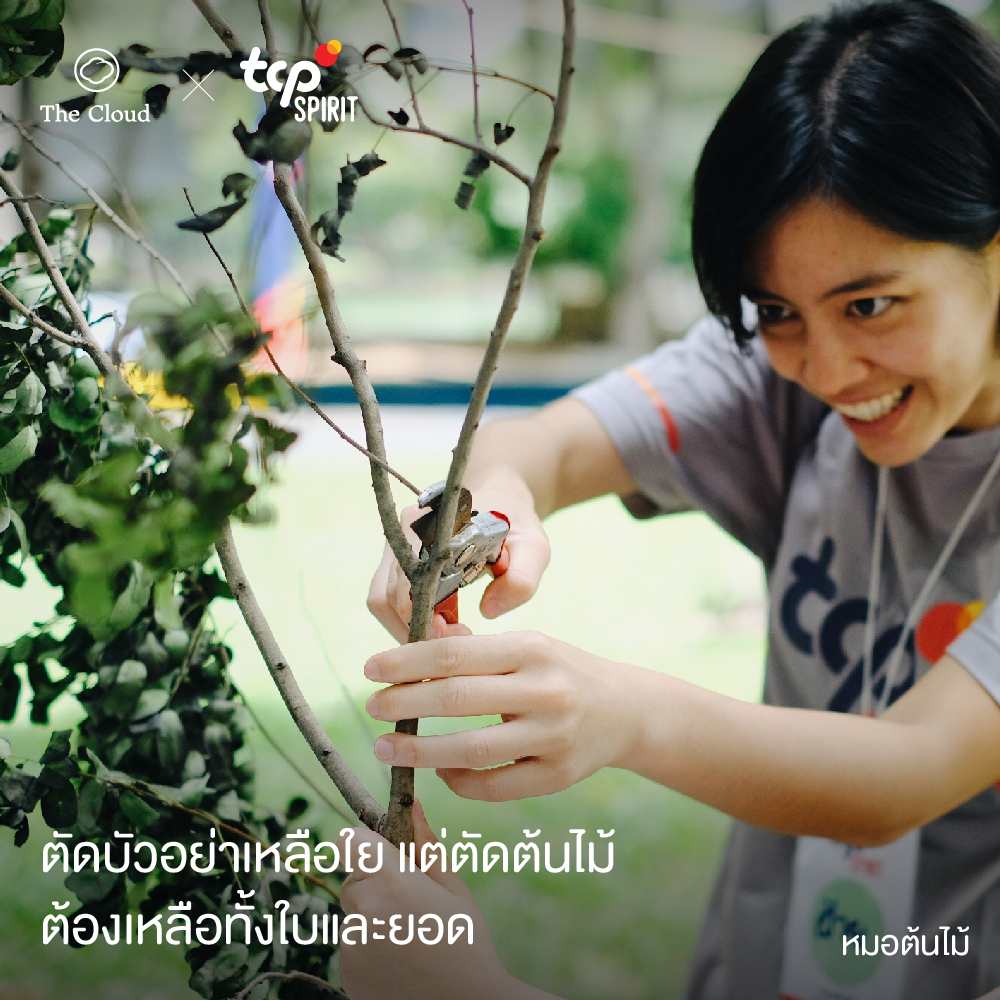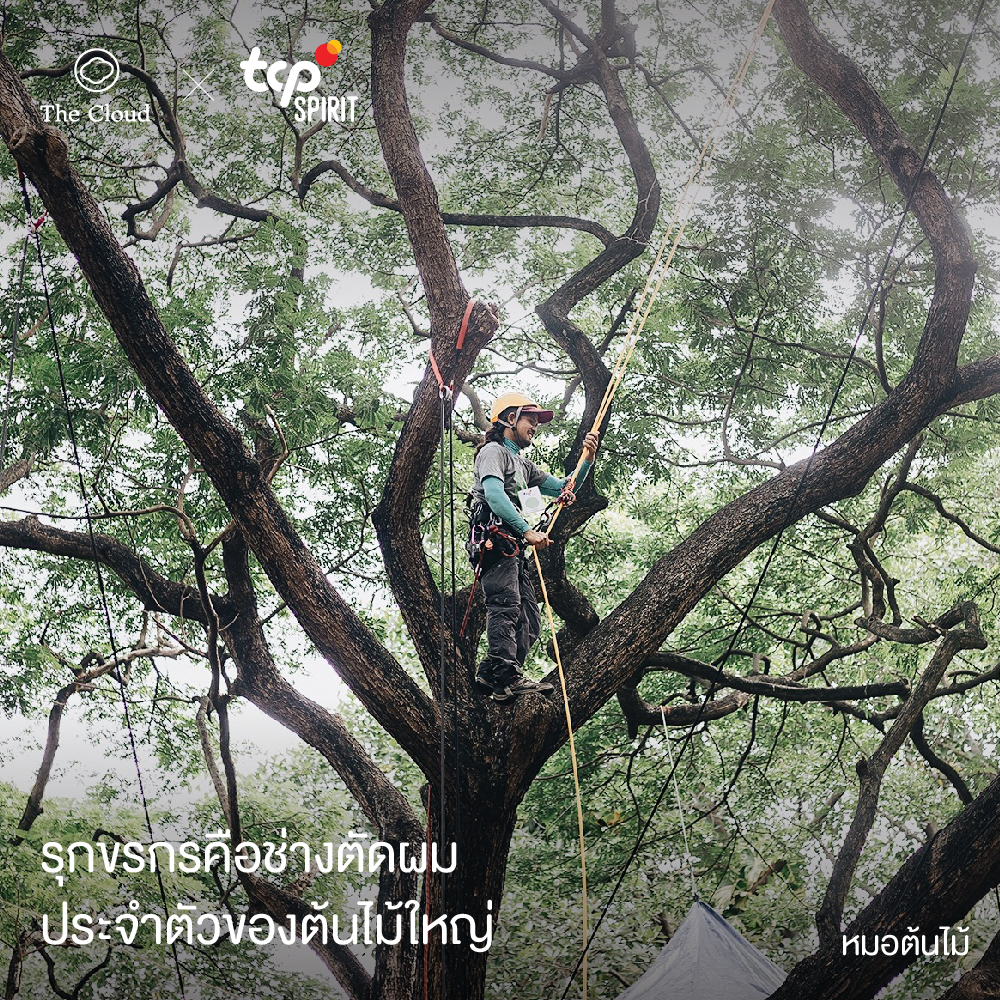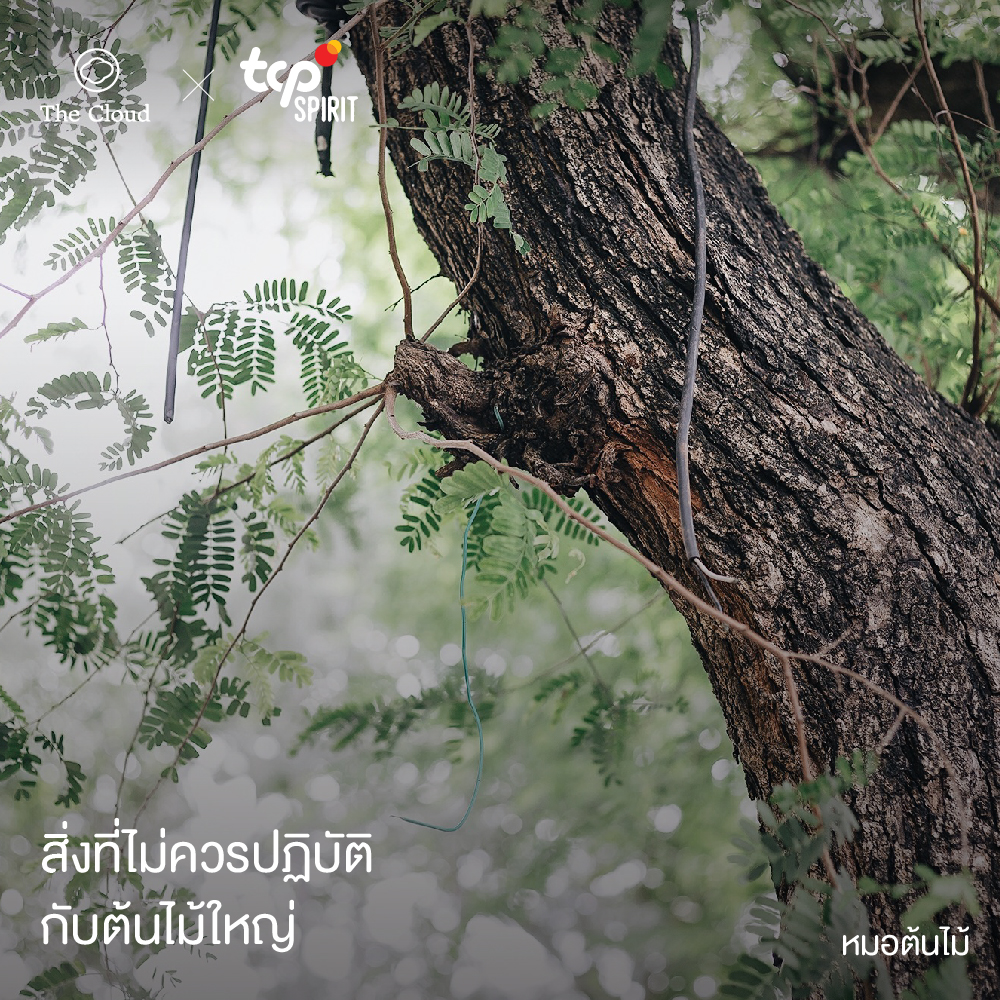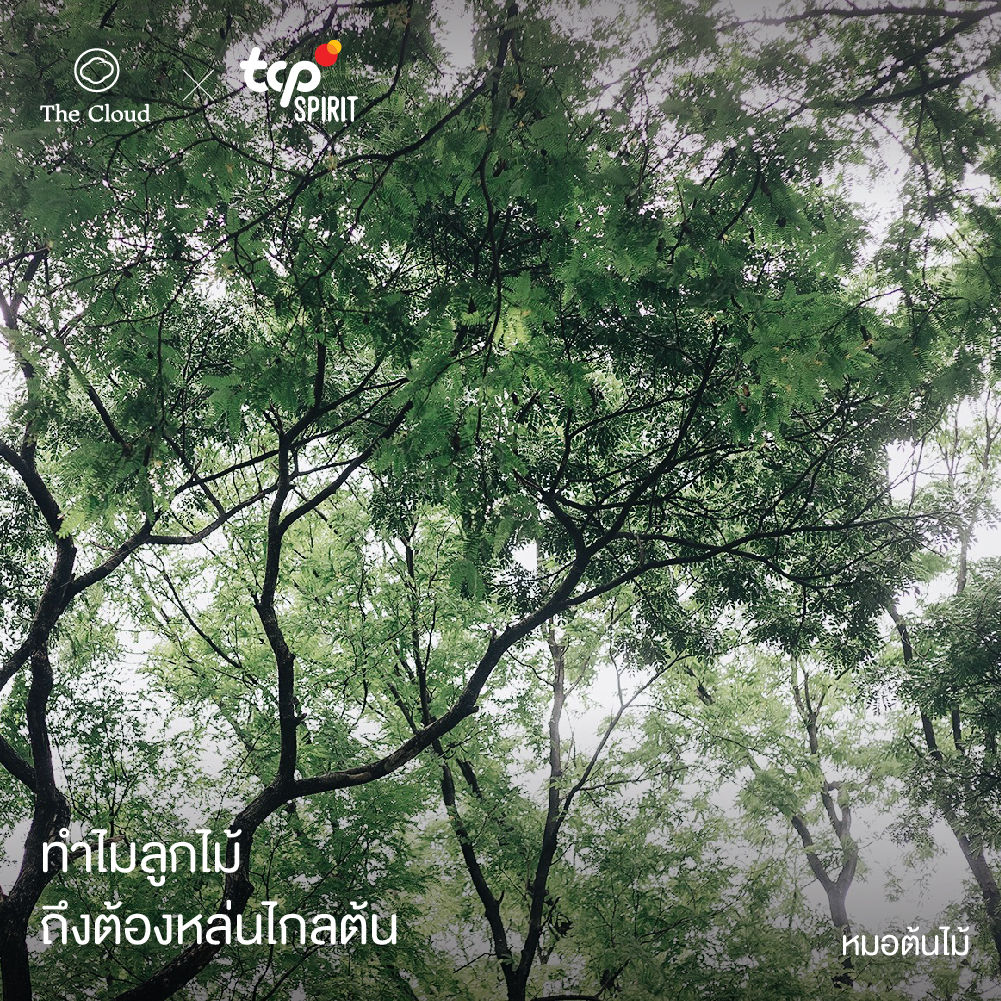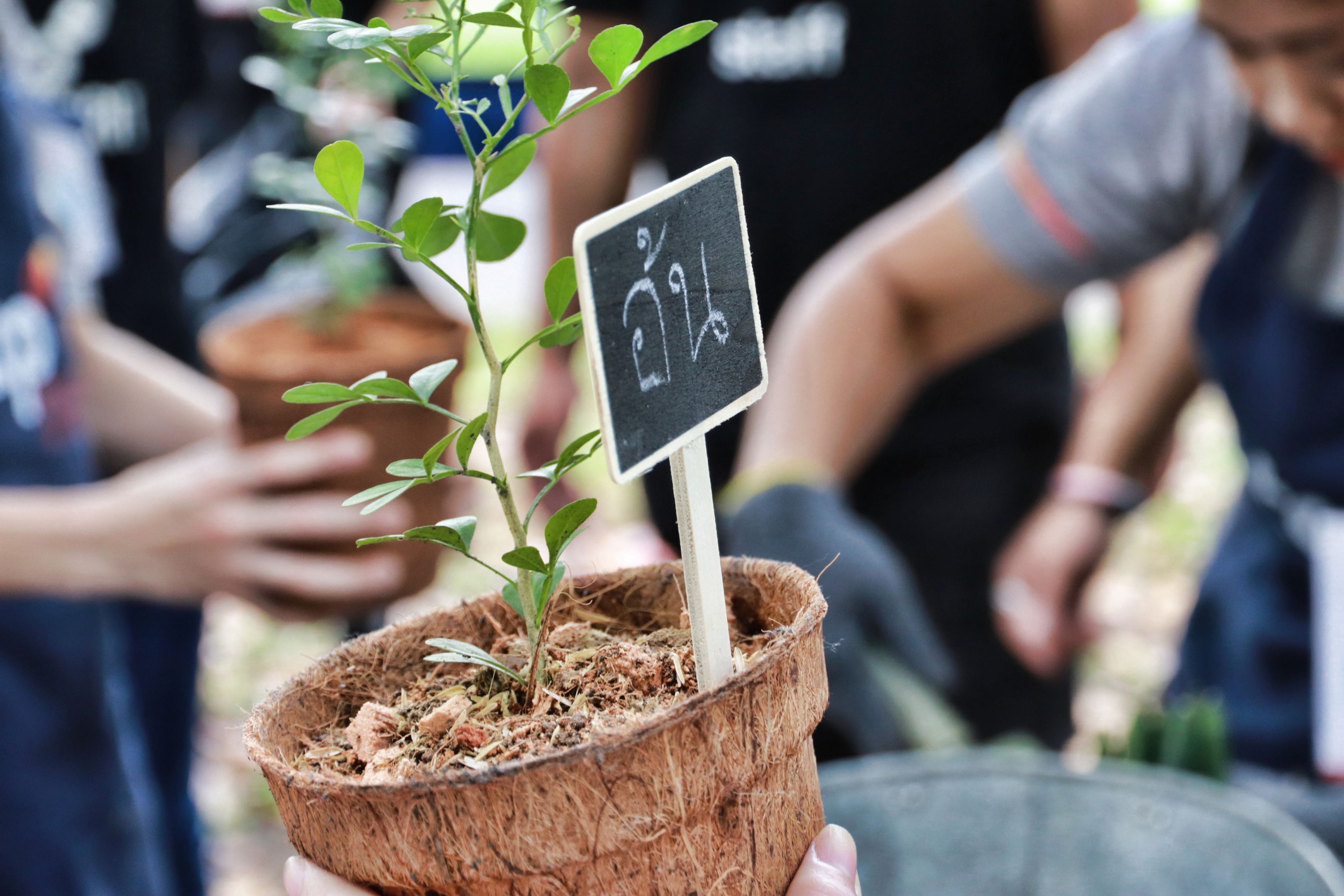TCP Spirit and the Cloud join force with BIG Trees to widen townspeople’s perspective on how to take care of huge urban trees
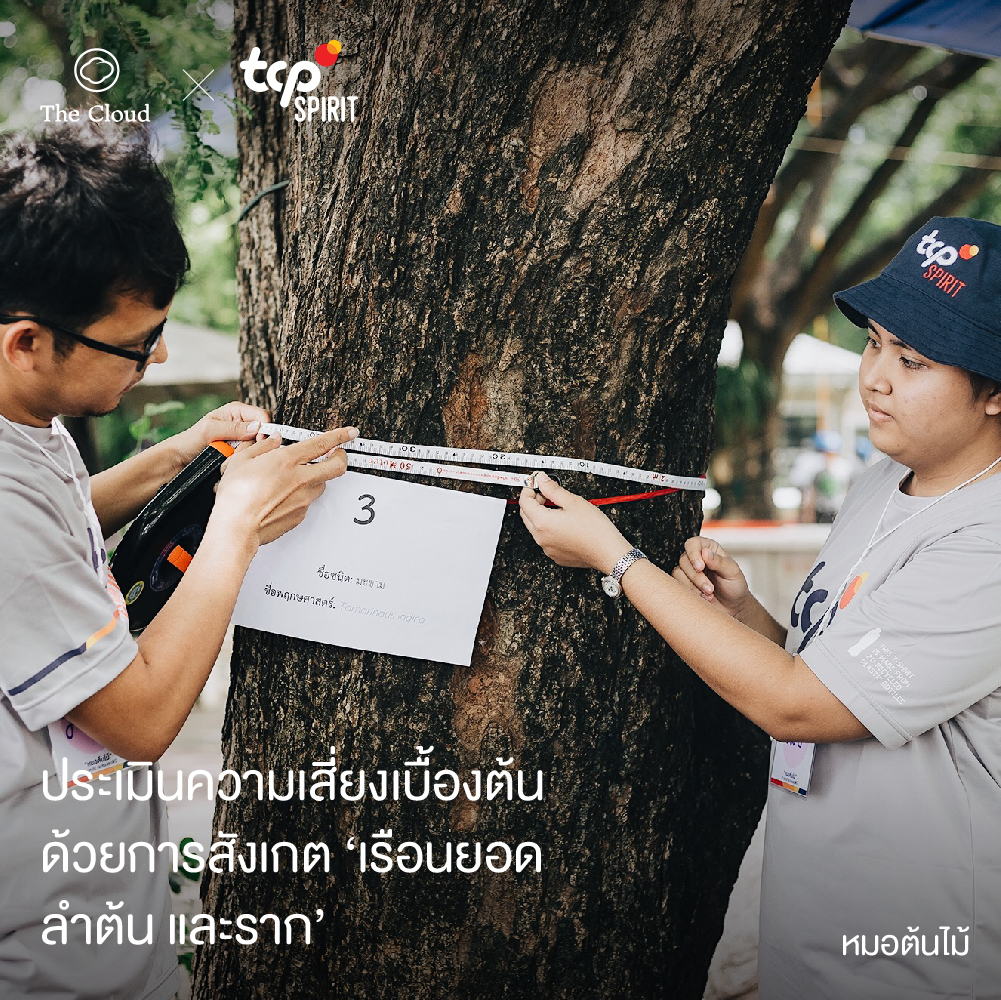

The “1st TCP Spirit: Doctor Tree at the Lumpini Park” was held on Saturday 21 July 2018. The event saw the participation of some 160 volunteers who had fun through a range of tree protection campaigns ranging from seedling transplanting, ecosystem learning and proper branch trimming to climbing huge trees at the Lumpini Park. Let’s recap some of the greatest moments of the sessions in case that anyone misses it!
1. Primary risk inspection by examining ‘canopy, trunk and roots’
- Know-how to take care of canopy, trunk and roots and also expansive knowledge on plant species are the key to inspecting tree’s health and lowering potential risk.
- Canopy (including twigs, stems and leaves): The balance of all parts is important. You should look into leaves’ colors, stems’ density and leaves’ transparency. Another area to be examined is trimming marks. A nice, defect-free pruning ensures no tree disease.
- Trunks: Barks’ colors, cracks and hollows must be investigated. Excessive one-sided trunk inclination is susceptible to collapse.
- Roots: Pay attention to how roots look. Whirly and floating roots are common features found on river banks and shores. Trimmed and mark-prone roots are vulnerable to diseases. Concrete cover keeps trees from properly breathing.
If an inspection suggests a high risk, please rush to an arborist to minimize a risk and keep trees healthy.
2. How to Distinguish ‘Dry Branch’ and ‘Deciduous Branch’?
Visual inspection of twig is part of an assessment of risk, threat and heath of a tree. However, there can be confusion between dry and deciduous twigs.
A dry twig is a dead and also prone to breaking and collapse. Meanwhile, a deciduous twig is a living one that is set to bloom soon. More fragile than a deciduous branch, a dry version can produce mushroom and have brown leaves. Knowledge on the related breed of plant helps make sure that a certain feature of branch is equal to the process of shedding leaves rather than becoming dry.
3. Common bagged soil misperception: ‘Ready for use’
People typically take it for granted that begged soils at markets are ready for use. Essentially, dirt becomes, after a time, smaller in size and the trunks fall to a pot’s bottom. The reason is that decomposed organic materials such as twig, rain tree leaves and coconut husk fiber outnumber soil. As a result, it is necessary that potting soil before work be prepared to help ascertain full benefit.
Simple soil preparation that goes very well with general seedlings can be achieved by following these steps: mix 4 pots of bamboo seeds with 2 pots of 2 crushed coconut pulp, 2 pots of fine coconut shells’ hair, 1 pot of white rice husk and 1 pot of cow dung fertilizer. Combine well.
Each component offers different benefits. That is, bamboo seeds are generally loose, but when coming into contact with water, they become thicker and look like muddy clay. Chopped coconut husk offers air-rich gap and stimulates roots’ growth. Similarly, fine coconut shell’s hair effectively controls evaporation rate of soil moisture and brilliantly holds water.
Please bear in mind that manure should be sourced from animal-related products and fit the size of tree. This is to reduce a shock of seedling or tree.
4. Please keep leaves and canopy when cutting trees
A sight of street trees of which trimmed parts are 100% straight is common. Only trunks exist and all leaves are gone. Arborists’ recommendation shows that at least 25% of leaves should remain to avoid shock. Without new leaves springing out, pruned trees will be doomed to die without even having to fall down.
5. Arborists are huge trees’ personal groomers
Arborists not only address issues and tackle risks, but also perform trimming for better natural appearance.
The shape of tree is a natural form of art. Prior to grooming, arborists examine a tree’s physical looks. For instance, rain trees at the Lumpini Park resemble an umbrella’s body of which trunks are evidently visible, no annoying twigs stick out and canopies spread wide apart. Landscape should be taken into account ahead of arboriculture.
6. Donts’
Please don’t tie huge trees with nylon rope – after you remove problematic branches to reduce risk, but you forgot to strip off the nylon rope. Thread will be embedded into bark, damaging the inner part of the trunk.
Cement beautification on the base of tree – please take into account that roots are in need of water and air. Concrete tiles harm breathing of tree, resulting in weaker health. Non air-tight materials can be used as solution to create room for water and air ventilation. At least one-third distance from the trunk is necessary to ensure proper laying that does not block the air from getting into the roots.
7. The further seeds dispersal away from parent plants, the better it is for trees
The proverb says “the apple doesn’t fall far from the tree”. However, the further seed is transferred from the tree, the better it is.
It is so because, according to the Nature Detector activity, the proverb doesn’t state that an apple does roll from a tree. Instead, it is carried away by wild animals such as hornbills and gibbons. The wild animals also move seeds to other places through consumption and excretion. Research have suggested that hard shells are depleted during the digestion of hornbills. Similarly, seeds after excretion ensure tree growth quality.

